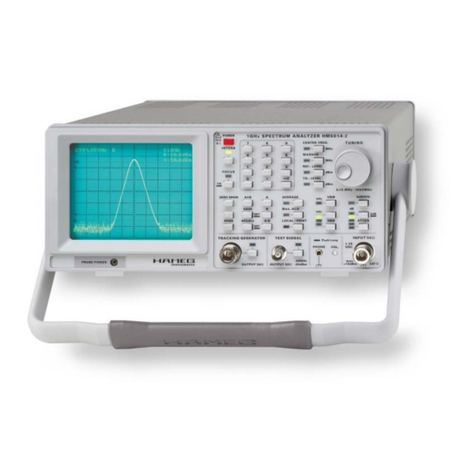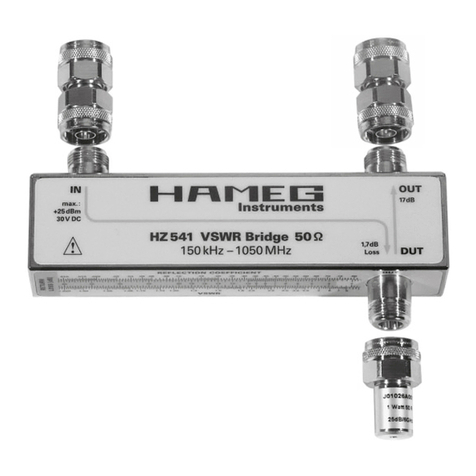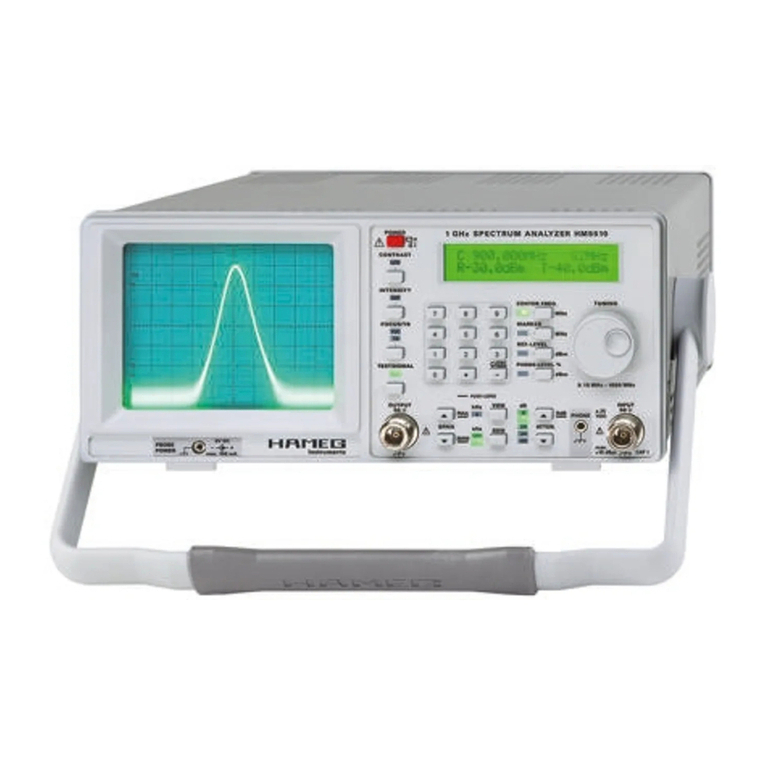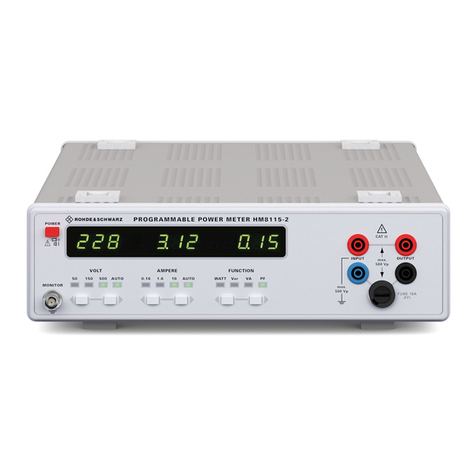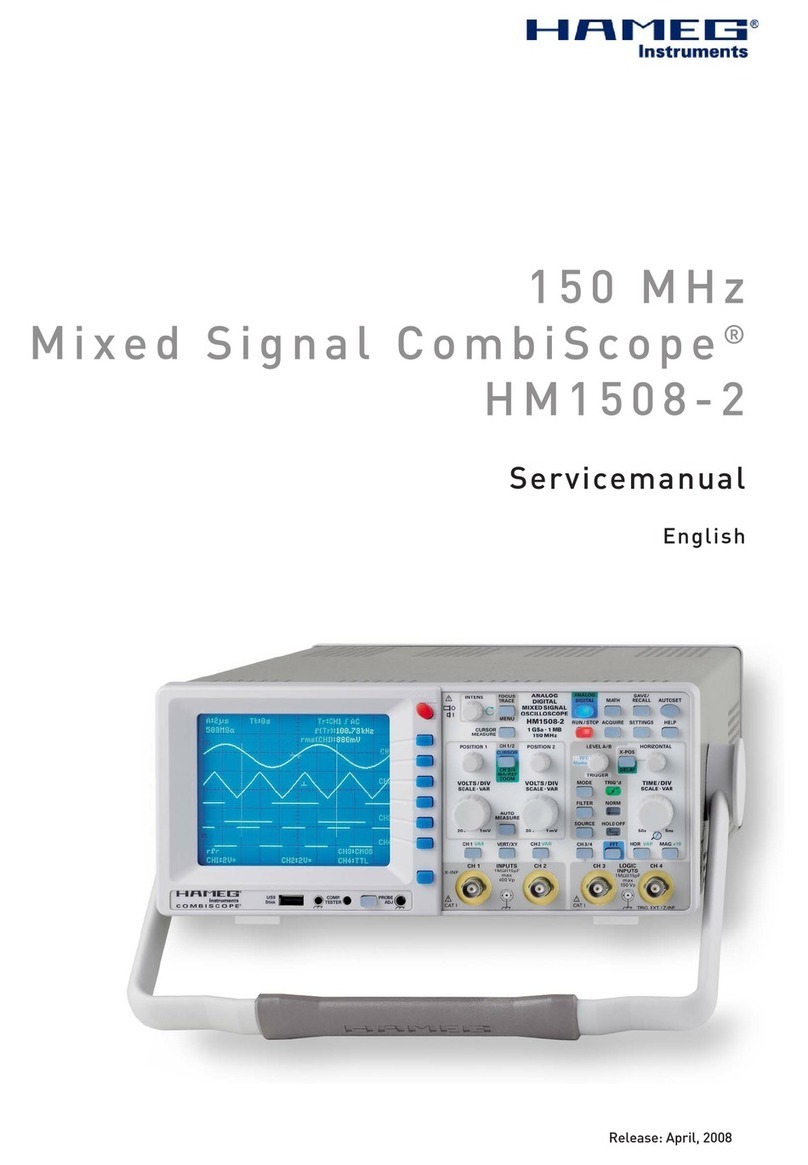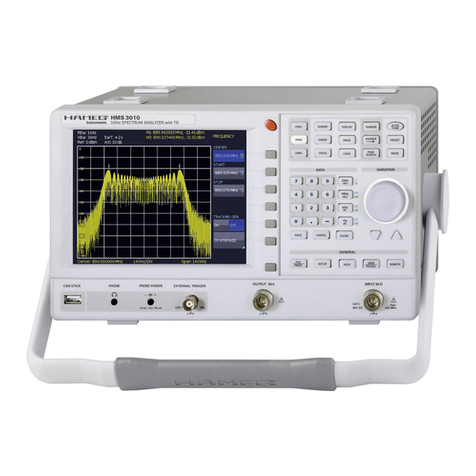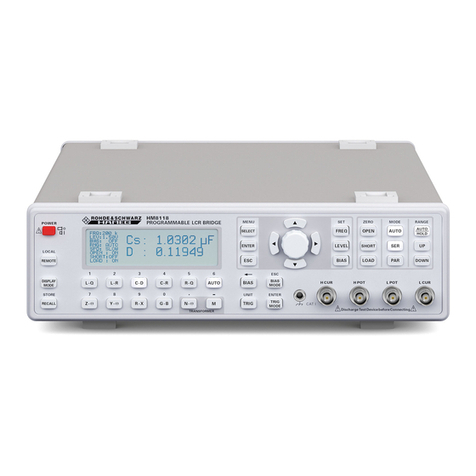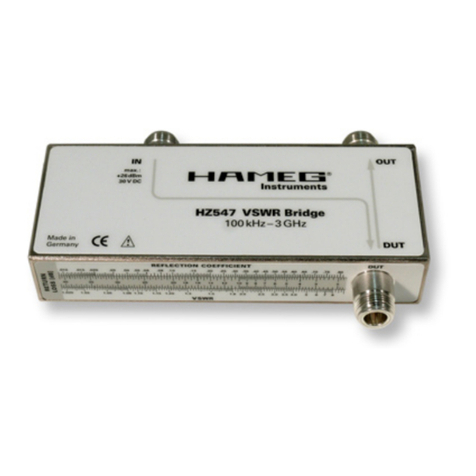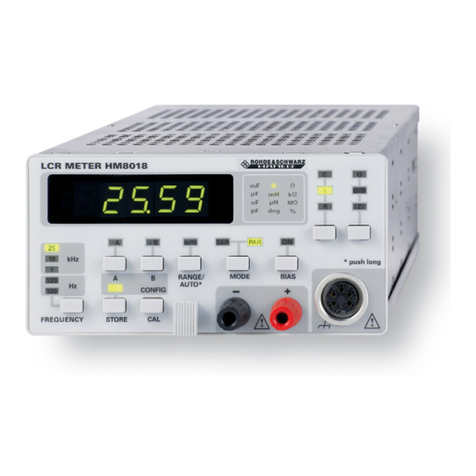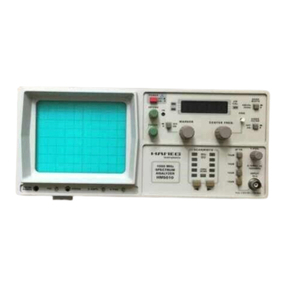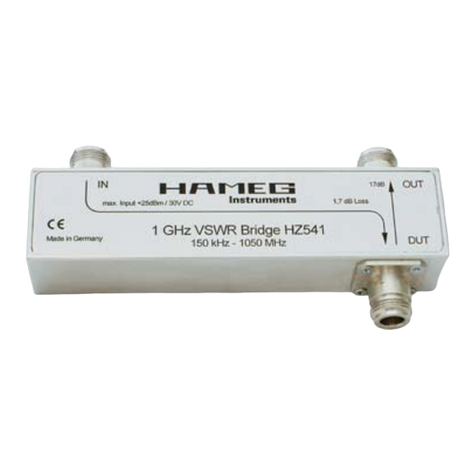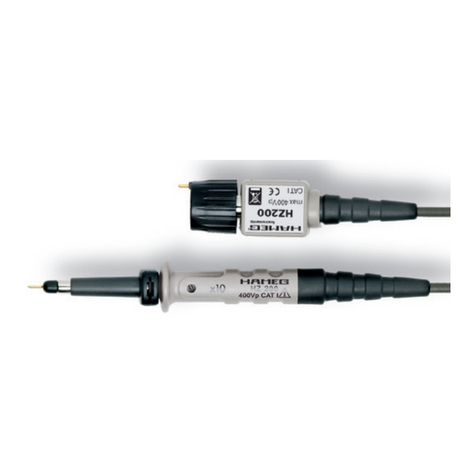
7
Subject to change without notice
Type of fuse:
Size 5 x 20 mm; 250V~, C;
IEC 127, Bl. III; DIN 41 662
(or DIN 41 571, Bl. 3).
Cut off: slow blow (T) 0,8A.
Important hints
In case safe operation may not be guaranteed do not use the
instrument any more and lock it away in a secure place.
Safe operation may be endangered if any of the following
was noticed:
– in case of visible damage.
– in case loose parts were noticed
– if it does not function any more.
– after prolonged storage under unfavourable conditions (e.g.
like in the open or in moist atmosphere).
– after any improper transport (e.g. insufficient packing not
conforming to the minimum standards of post, rail or trans-
port firm)
Proper operation
Please note: This instrument is only destined for use by person-
nel well instructed and familiar with the dangers of electrical
measurements.For safety reasons the oscilloscope may only
be operated from mains outlets with safety ground connector.
It is prohibited to separate the safety ground connection. The
plug must be inserted prior to connecting any signals.
CAT I
This oscilloscope is destined for measurements in circuits not
connected to the mains or only indirectly. Direct measurements,
i.e. with a galvanic connection to circuits corresponding to the
categories II, III, or IV are prohibited!
The measuring circuits are considered not connected to the
mains if a suitable isolation transformer fulfilling safety class
II is used. Measurements on the mains are also possible if
suitable probes like current probes are used which fulfil the
safety class II. The measurement category of such probes must
be checked and observed.
Measurement categories
The measurement categories were derived corresponding to
the distance from the power station and the transients to be
expected hence. Transients are short, very fast voltage or cur-
rent excursions which may be periodic or not.
Measurement CAT IV:
Measurements close to the power station, e.g. on electricity
meters
Measurement CAT III:
Measurements in the interior of buildings (power distribution
installations, mains outlets, motors which are permanently
installed).
Measurement CAT II:
Measurements in circuits directly connected to the mains
(household appliances, power tools etc).
Measurement CAT I:
Electronic instruments and circuits which contain circuit
breakers resp. fuses.
Environmental conditions
The oscilloscope is destined for operation in industrial, business,
manufacturing, and living sites.
Operating ambient temperature: 0 to + 40 degrees C. During
transport or storage the temperature may be –20 to +55 degrees
C. Please note that after exposure to such temperatures or in
case of condensation proper time must be allowed until the
instrument has reached the permissible range of 0 to + 40 de-
grees resp. until the condensation has evaporated before it may
be turned on! Ordinarily this will be the case after 2 hours. The
oscilloscope is destined for use in clean and dry environments.
Do not operate in dusty or chemically aggressive atmosphere
or if there is danger of explosion.
The operating position may be any, however, sufficient ventila-
tion must be ensured (convection cooling). Prolonged operation
requires the horizontal or inclined position.
Do not obstruct the ventilation holes!
Specifications are valid after a 20 minute warm-up period
between 15 and 30 degr. C. Specifications without tolerances
are average values.
Warranty and repair
HAMEG instruments are subjected to a strict quality control.
Prior to leaving the factory, each instrument is burnt-in for 10
hours. By intermittent operation during this period almost all
defects are detected. Following the burn-in, each instrument is
tested for function and quality, the specifications are checked
in all operating modes; the test gear is calibrated to national
standards.
The warranty standards applicable are those of the country
in which the instrument was sold. Reclamations should be
directed to the dealer.
Only valid in EU countries
In order to speed reclamations customers in EU countries may
also contact HAMEG directly. Also, after the warranty expired,
the HAMEG service will be at your disposal for any repairs.
Return material authorization (RMA):
Prior to returning an instrument to HAMEG ask for a RMA
number either by internet (http://www.hameg.com) or fax. If
you do not have an original shipping carton, you may obtain
one by calling the HAMEG sales dept (+49-6182-800-300) or by
Maintenance
Clean the outer shell using a dust brush in regular intervals.
Dirt can be removed from housing, handle, all metal and plastic
parts using a cloth moistened with water and 1 % detergent.
Greasy dirt may be removed with benzene (petroleum ether) or
alcohol, there after wipe the surfaces with a dry cloth. Plastic
parts should be treated with an antistatic solution destined
for such parts. No fluid may enter the instrument. Do not use
other cleansing agents as they may adversely affect the plastic
or lacquered surfaces.
Line voltage
The instrument has a wide range power supply from 105 to 253
V, 50 or 60 Hz ±10%. There is hence no line voltage selector.
The line fuse is accessible on the rear panel and part of the line
input connector. Prior to exchanging a fuse the line cord must
be pulled out. Exchange is only allowed if the fuse holder is
undamaged, it can be taken out using a screwdriver put into the
slot. The fuse can be pushed out of its holder and exchanged.
The holder with the new fuse can then be pushed back in place
against the spring. It is prohibited to ”repair“ blown fuses or to
bridge the fuse. Any damages incurred by such measures will
